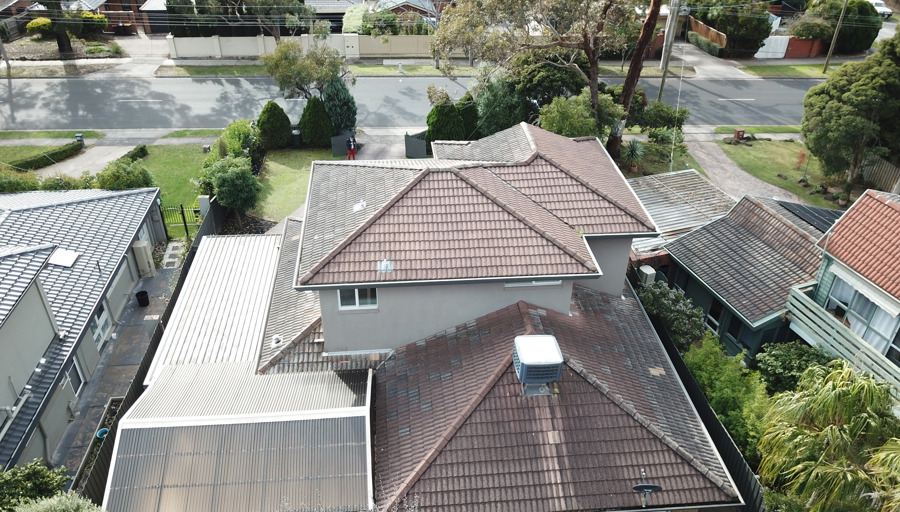How does bad weather impact your roof?
Nothing can compare to the level of protection and safety your roof offers. It protects you and your loved ones from the freezing chills in winter, scorching heat during summer and heavy winds and rains in monsoon. However, harsh weather can, over time, take a toll on your roof and its longevity.
Different weather conditions affect your roof differently, making it lose its look, form and integrity. Whether it’s thunderstorms, hurricanes, wind storms, flooding, or severe heat, your roof is subject to all kinds of weather-related damage. Irrespective of which part of the country you live in, the weather will affect a roof at some point.
Understanding the effects of specific weather on a roof and the damage it can cause will lead you to learn about preventative measures. By knowing these aspects, you will learn maintenance skills that can help you defer expensive roof repairs later.
So, how does weather impact your roof, and what preventive measures should you take to keep your roof healthy?
How Bad Weather Impact Roofs?
Here’s a brief about how different destructive weather elements in Australia can affect your roof’s condition.
Rain
A good downpour is beneficial for all forms of life on earth. However, it’s also a source of anxiety for many homeowners. Heavy rain can pool and accumulate on dents or uneven surfaces of your roof. Over time, this water can get into your home, leaving you with a long list of potential roof damage, including mould growth, leak foundations, etc.
Further, if your roof is not in the best condition, heavy rain can damage the roof. Prolonged metal roof leak problems and wind-driven rain can deteriorate your home’s structural integrity. Problems that appear minor initially can eventually develop into major issues if left untreated.
Take regular maintenance measures to ensure your roof’s good health. Ensure your gutters are also in good condition and clear of debris. Keep a check on your roof during the rainy season or if rain is anticipated - early detection can help prevent damage.
Hail And Wind
Strong winds, whether it’s a blustery day or accompanied by a thundering storm, pose a significant threat to your roof’s integrity.
When heavy winds or storms hit, your roof will likely be ripped off. However, the chances for this to happen are relatively slim. It hugely depends on the condition of your roof. If part of your roof is weakened or damaged from general ageing or prior events, it will be susceptible to blow off when a strong wind or storm hits.
Moreover, trees rubbing against the roof in extremely windy conditions can also damage it. The abrasion can affect the protective coating, leading to corrosion eventually. To prevent such a situation, keep checking the growth of trees and trim as required.
On the other hand, hail causes the most immediate harm to metal roofing. It largely causes cosmic damage, such as loss and indentation of the top paint coat, dents to flashings, sheets, gutters, etc.
Concerns arise in low-pitch roofs where significant denting causes debris accumulation and ponding within pans. Further, an indentation may cause substantial deformation to sheet laps, which can hinder the anti-capillary action. This draws water between the sheets, resulting in corrosion and increasing the potential for leaks!
If you suspect any hail and wind damage on your roof, call a professional once the harsh weather is passed.
Extreme Heat
Harsh heat is another element that can be detrimental to your roof’s lifespan. On being exposed to prolonged heat, especially during peak summers, certain roofing materials tend to expand and contract constantly. This eventually damages the roof tiles. When the temperature gets too high, roof tiles may sometimes curl, shrink or even crack. This will likely make your home interiors hot during scorching summers.
Humidity
Tropical depressions or hurricanes can cause humidity and heat that may crack tiles, causing humidity to build up on your roof. Condensation from moisture accumulation can also cause leaks and long-term water damage. That is why you should consult a residential roofing contractor about using waterproofing materials for your roof.
What Can You Do?
Well, we can't control the weather. However, as a homeowner, you can use different ways to minimise the impact of bad weather on your roof. Hiring roofing professionals for regular inspections is the simplest and most effective preventive measure you can take. If detected and treated early enough, it can prevent minor issues from escalating to major ones during such weather conditions.
How Can Melbourne Quality Roofing Help?
Regular maintenance can keep your roof in good condition, ensuring it can withstand even the harshest weather. At Melbourne Quality Roofing, we provide customised repair or restoration services as your roof requires. You can even contact us for a regular roof inspection and maintenance to prevent impending harsh weather. We will repair any wear and tear your roof or gutter system may be having. Further, we suggest maintenance and preventive measures to prepare you for bad weather.
And if you ever need roof restoration and repair services in Melbourne, feel free to contact us on (03) 9540 8865.


















Add Your Comments
comments powered by Disqus